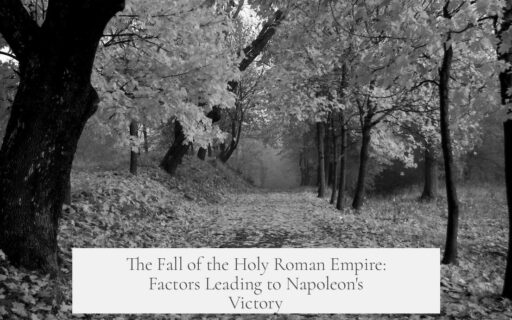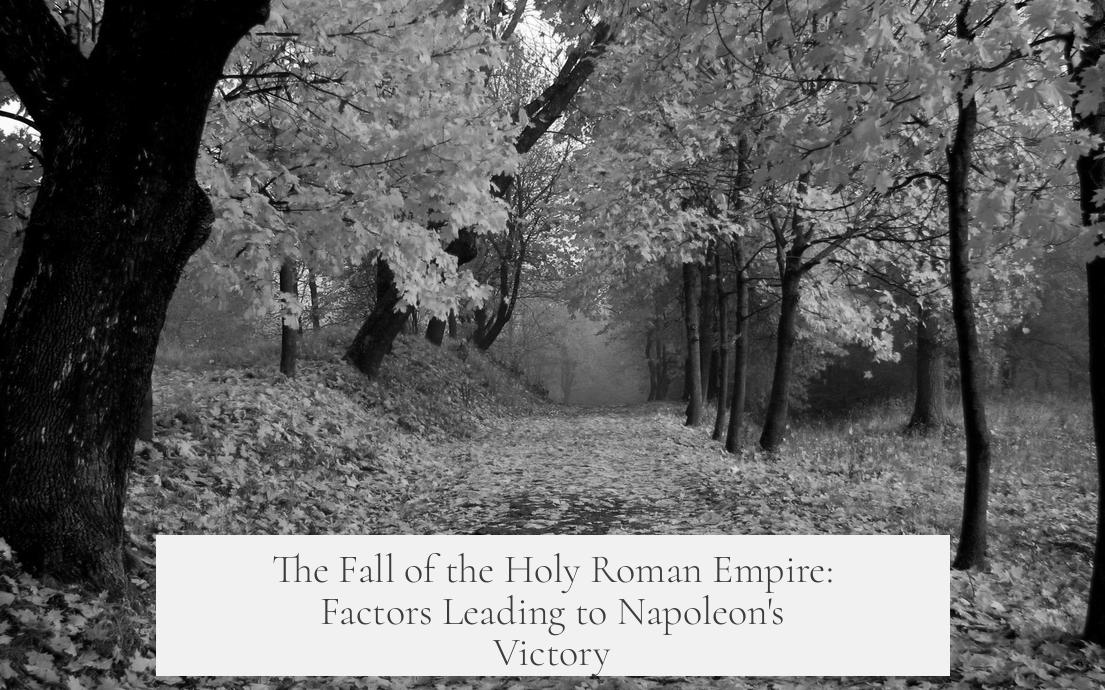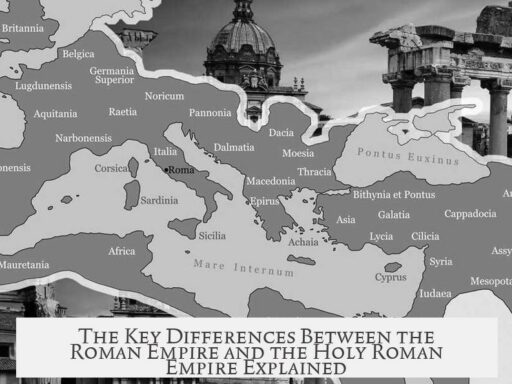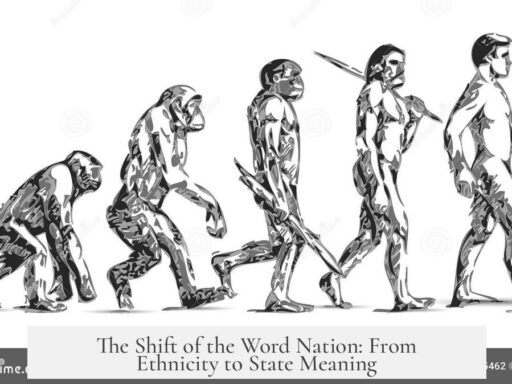The Holy Roman Empire falls to Napoleon primarily due to its prolonged political decline and military weaknesses, compounded by Napoleon’s military prowess and strategic advantage. By 1806, the Empire has become a fragmented, largely ceremonial institution unable to resist Napoleon’s growing influence in Central Europe.
The Empire’s power erosion spans centuries. It suffers severe setbacks after the Thirty Years’ War and the Ottoman invasions into Hungary and Austria. These conflicts weaken central authority and reinforce the Empire’s decentralized structure. By the 18th century, the Emperor rules over multiple independent or semi-autonomous electorates, duchies, and kingdoms. To maintain peace, each Emperor concedes more autonomy to these states. This situation drastically reduces the Emperor’s ability to unify or mobilize the Empire effectively.
Francis II, the last Holy Roman Emperor, ends the Empire’s existence in 1806. He abolishes the title after the 1805 Battle of Austerlitz, where Napoleon decisively defeats the combined Austro-Russian forces. The defeat reveals the Empire’s military inadequacies and the threat Napoleon poses. Francis feared Napoleon might claim the imperial title and undermine Habsburg authority. The rising Confederation of the Rhine, a French-supported coalition of German states, further weakens traditional imperial control.
The Empire’s military weaknesses compound its political fragmentation. The Habsburg monarchy, which leads the Empire, suffers several humiliating defeats throughout the Napoleonic Wars. Despite having skilled leaders, such as Archduke Charles, and elite cavalry units, the army relies on outdated tactics and poor recruiting methods. Napoleon’s forces benefit from meritocratic promotion, fresh manpower through the Levee en Masse, and a strong esprit de corps. French forces demonstrate superior organization, adaptability, and aggressive campaigning, which Austrian forces struggle to counter.
Key Austrian military failures include:
- The Battle of Hohenlinden (1800), in which French forces outmaneuver the Austrian army.
- The encirclement and surrender of Austrian forces at the Battle of Ulm (1805) prior to Austerlitz.
- The crushing defeat at the Battle of Austerlitz (1805), often called Napoleon’s greatest victory.
While Austria had capable commanders and quality units, these victories were beyond its reach due to organizational deficiencies and the rapid evolution of French military doctrine.
The German states themselves show varied conditions. States like Prussia maintain strong armies and contribute significantly to the anti-Napoleon coalitions, including providing 40% of the troops at Waterloo. The decentralized German princes sometimes even hire out their troops as mercenaries abroad. Thus, the issue is not uniform military weakness across all territories but a fractured political structure without centralized command.
In sum, the fall of the Holy Roman Empire reflects a long decline marked by:
- Diminishing imperial authority caused by centuries of internal concessions
- Decentralization that prevents unified military response
- Political fragmentation and infighting among the Empire’s member states
- Military inferiority against the innovative, aggressive French forces
- Francis II’s decision to dissolve the Empire to avoid Napoleon’s control
| Factors Leading to Fall | Details |
|---|---|
| Political Decline | Thirty Years’ War and Ottoman invasions severely weaken centralized power |
| Decentralization | Emperor’s power reduces as German states gain autonomy |
| Military Defeats | Losses at Hohenlinden, Ulm, and Austerlitz highlight Austrian weaknesses |
| Napoleon’s Military Strength | Meritocracy, mass conscription, and aggressive tactics |
| Francis II’s Abolishment | Dissolves Empire in 1806 fearing Napoleon’s ascendancy |
The fall of the Holy Roman Empire is thus an intersection of internal decay and external pressure. Napoleon’s reforms and battlefield successes capitalize on a centuries-old erosion of imperial power. The Empire’s inability to function as a cohesive state ultimately leads to its abolition.
- The Holy Roman Empire becomes a ceremonial title with little real political or military power by the 18th century.
- Political decentralization and concessions to member states weaken imperial authority over time.
- Napoleon’s superior military organization and aggressive strategy overwhelm Austrian forces.
- Francis II abolishes the Empire in 1806 after the defeat at Austerlitz and rising French influence.
- German states vary in strength, with places like Prussia remaining militarily significant but politically divided.
Why Did the Holy Roman Empire Fall to Napoleon?
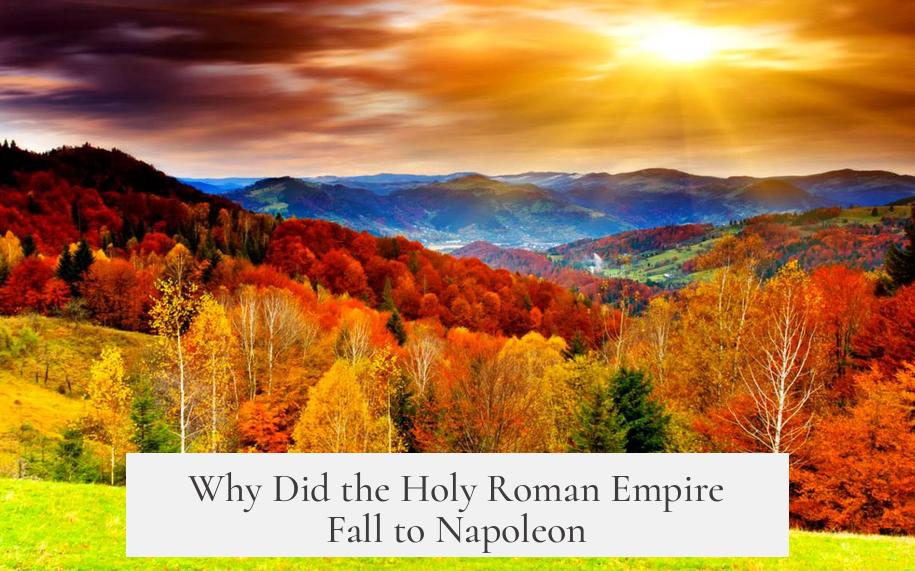
The Holy Roman Empire fell to Napoleon mainly because it had ceased to be a real political or military power by the early 19th century, transforming into a largely ceremonial entity with little capacity to resist his advancing forces. This collapse was not sudden but the outcome of slow degradation over centuries, compounded by internal divisions and the meteoric rise of French military might.
So, why did the supposedly vast and ancient Holy Roman Empire—that patchwork of kingdoms, duchies, and principalities—fail so dramatically against one man’s ambitions? Let’s unpack this story layer by layer.
The Empire’s Fragile State Before Its Demise
The Holy Roman Empire, by the time Napoleon swooped in, had turned into something of a relic. Its power had evaporated gradually, especially after monumental blows like the Thirty Years War (1618-1648) and persistent Ottoman incursions into Hungary and Austria.
The Empire wasn’t a unified state but a loose coalition of many semi-independent states. This decentralization was baked in: to become Emperor, a ruler was elected by a collection of princes, dukes, and kings. Every new Emperor had to grant more autonomy to these regions, which meant with each reign, his power thinned out like badly stirred tea.
By the early 1800s, the Empire resembled more a bureaucratic ghost than a united force. Francis II, the last Holy Roman Emperor, was reportedly a kind family man—nice, but not the sharpest sword in the armory when it came to governance. After the devastating Battle of Austerlitz in 1805, he abruptly abolished the title in 1806. Why? He feared Napoleon seizing the title and dominating the German lands through the powerful Confederation of the Rhine, which was already under French influence.
Essentially, the HRE’s power had crumbled, and there was little chance of it rallying troops or resources on par with Napoleon’s war machine.
Military Realities: French Innovation vs Austrian Tradition
Napoleon’s forces were a formidable blend of leadership, structure, and sheer willpower. The Grand Armée benefited from a semi-meritocratic system, letting talented officers rise on skill, not just birthright. The Levée en masse (mass conscription) flooded French ranks with manpower. This combined with aggressive tactics and exceptional morale made the French army a well-oiled war machine.
The Austrian military, a core component of the HRE, was struggling to keep pace. They still had elite cavalry units and competent commanders such as Archduke Charles, who later proved he could stand toe-to-toe with Napoleon at battles like Aspern-Essling and Wagram. However, Austrian forces clung to old-fashioned tactics, ineffective recruiting, and suffered from infighting and poor strategic decisions.
This mismatch showed clearly in defeats like the Battle of Hohenlinden and the Ulm encirclement, where the French repeatedly outmaneuvered the Austrians.
The German States: Mercenaries, Chaos, and Missed Opportunities
Interestingly, many of the German states within the former Empire were not in complete disarray. They had a strong tradition of hiring out soldiers as mercenaries abroad, some even fighting in the American Revolution on both sides. Prussia, for example, was a rising power and later contributed nearly 40% of the coalition troops at Waterloo, showing potential that was not fully realized when the HRE fell.
The problem was internal rivalry and fragmentation. The countless small states fought among themselves or remained indifferent to forming a united front. This political bickering sucked resources and attention away from creating a cohesive defense against Napoleon’s expanding empire.
The Slow Death of Imperial Authority

The Empire’s decline was a slow-motion saga spanning centuries. The thirty years of brutal conflict hollowed out the HRE’s authority, as did the Ottoman threat challenging its eastern flank. Over time, the Emperor became more a symbolic figurehead than a ruler with actual control.
By the late 18th century, the Holy Roman Emperor had little power outside a ceremonial crown. The Empire resembled a feudal patchwork quilt full of holes rather than a clean mosaic of unified states. When Napoleon burst onto the scene, this fragile, decentralized mess was no match.
What Can We Learn From This?
Napoleon didn’t just conquer because he had better soldiers. He succeeded because he faced an empire that was politically divided, militarily outdated, and administratively fractured.
For modern readers, there’s a lesson in sustaining power. Centralized authority that erodes over time creates vulnerabilities. Cooperation and modernization matter. The Empire’s failure to adapt politically and militarily created gaping holes that Napoleon’s genius exploited.
Imagine if the Holy Roman Empire had found ways to unify its member states or keep its military competitive. Perhaps it might have lived to see another day.
Wrapping Up The Empire’s Endgame
In short, the Holy Roman Empire fell to Napoleon because it was already dying due to centuries of decline in authority, military weakness, and fragmented politics. Francis II’s decision to dissolve it in 1806 was a recognition of a new reality: the old medieval framework simply could not survive the age of revolutionary and Napoleonic warfare.
Napoleon was the perfect storm—a charismatic and innovative leader facing a declining dynasty clinging to outdated customs. This mix doomed the Empire, marking the end of an era and the dawn of modern Europe.
So next time someone asks why the Holy Roman Empire fell to Napoleon, just remind them: it wasn’t just the French guns. It was centuries of fading power, internal strife, and Napoleon’s extraordinary leadership combined. A classic case of history’s perfect storm.
